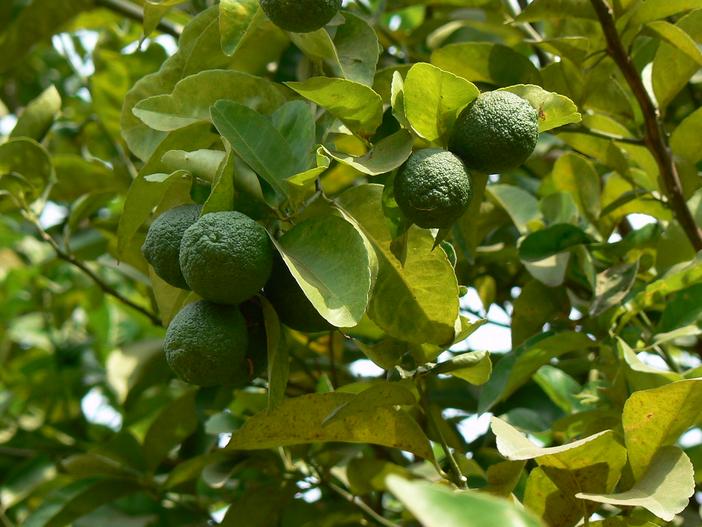Rough Lemon
(Citrus ×taitensis)
Rough Lemon (Citrus ×taitensis)
/
/

Dinesh Valke
CC BY-SA 2.0
Image By:
Dinesh Valke
Recorded By:
Copyright:
CC BY-SA 2.0
Copyright Notice:
Photo by: Dinesh Valke | License Type: CC BY-SA 2.0 | License URL: https://creativecommons.org/licenses/by-sa/2.0/ | Uploader: Dinesh Valke | Publisher: Flickr

























Estimated Native Range
Summary
Citrus ×taitensis, commonly known as Rough Lemon, is an evergreen tree resulting from the artificial hybridization of C. medica (citron) and C. reticulata (mandarin orange). It is characterized by its thick, bumpy rind and is primarily used as a rootstock for other citrus cultivars due to its hardiness and disease resistance. Rough Lemon typically grows to a height and width of 12-20 feet (4-6 meters), with a rounded canopy and dense foliage. The leaves are glossy green, and the tree produces fragrant white flowers followed by large, yellow, rough-skinned lemons throughout the year, with the main fruiting season in late winter to early spring.
The Rough Lemon tree is valued for its vigorous growth and adaptability to various soil types, making it an excellent rootstock choice. It is also grown for ornamental purposes in gardens and landscapes where space allows. This species requires full sun exposure to thrive and prefers well-drained soils with regular watering, although it can tolerate some drought once established. While it is not commonly grown for fruit production due to the poor quality of its lemons, it is an important component in the cultivation of more desirable citrus varieties. Gardeners should be aware that Rough Lemon can be susceptible to common citrus pests and diseases, such as citrus canker and root rot. It is also important to note that the tree has thorns, which can be a hazard in garden settings.CC BY-SA 4.0
The Rough Lemon tree is valued for its vigorous growth and adaptability to various soil types, making it an excellent rootstock choice. It is also grown for ornamental purposes in gardens and landscapes where space allows. This species requires full sun exposure to thrive and prefers well-drained soils with regular watering, although it can tolerate some drought once established. While it is not commonly grown for fruit production due to the poor quality of its lemons, it is an important component in the cultivation of more desirable citrus varieties. Gardeners should be aware that Rough Lemon can be susceptible to common citrus pests and diseases, such as citrus canker and root rot. It is also important to note that the tree has thorns, which can be a hazard in garden settings.CC BY-SA 4.0
Plant Description
- Plant Type: Tree
- Height: 12-20 feet
- Width: 12-20 feet
- Growth Rate: Moderate
- Flower Color: White
- Flowering Season: Spring
- Leaf Retention: Evergreen
Growth Requirements
- Sun: Full Sun
- Water: Medium
- Drainage: Fast, Medium
Common Uses
Bee Garden, Bird Garden, Butterfly Garden, Edible*Disclaimer: Easyscape's listed plant edibility is for informational use. Always verify the safety and proper identification of any plant before consumption., Fragrant, Hummingbird Garden
Natural Habitat
Artificial hybrid, not applicable to natural habitat ecology
Other Names
Common Names: Blood Orange , Mandarin Lime
Scientific Names: Citrus ×taitensis , Citrus ×jambhiri , Citrus ×aurantium subsp. jambhiri , Citrus ×sinensis subsp. jambhiri , Citrus verrucosa
GBIF Accepted Name: Citrus ×taitensis Risso